► Electric SUV promises great value
► Almost delivers
► A little more polish required
Another day, another new Chinese electric car, though the Omoda E5 SUV is a little different for also having a companion petrol-powered model. Sadly, the combustion-engined Omoda 5 didn’t impress us much – so can a battery pack and an e-motor turn our heads a little more? And can aggressive pricing give it any chance of troubling our list of the best electric SUVs?
How aggressive? The Omoda E5 starts at £33,055 and has the fastback style of the similarly-sized Volvo EC40 – which starts at over £51k. The Volvo goes further per charge, but has about the same performance at that entry price point, so you can see how the newcomer might appeal.
For further reference, a Nissan Ariya starts at £39,645, while at the new-brand budget end of things, the less sporty-looking Leapmotor C10 is available from £36,500. Other pros for the Omoda include a UK dealer network, a seven-year warranty and a five-star Euro NCAP rating.
At a glance
Pros: Performance is acceptable, seems relatively efficient – making it good value
Cons: Slow to charge, infotainment is poor, small boot, driving experience lacks nuance
What’s new?
Omodo UK is describing the E5 as ‘half a generation’ more advanced than the closely related petrol-powered 5. There’s a clear style difference on the outside, the electric vehicle (EV) replacing the glam-rock spanglyness of the ICE version’s intricate front grille with a smoother look that incorporates the door for the charging port. As such, you can forget reversing into charging bays, unfortunately.
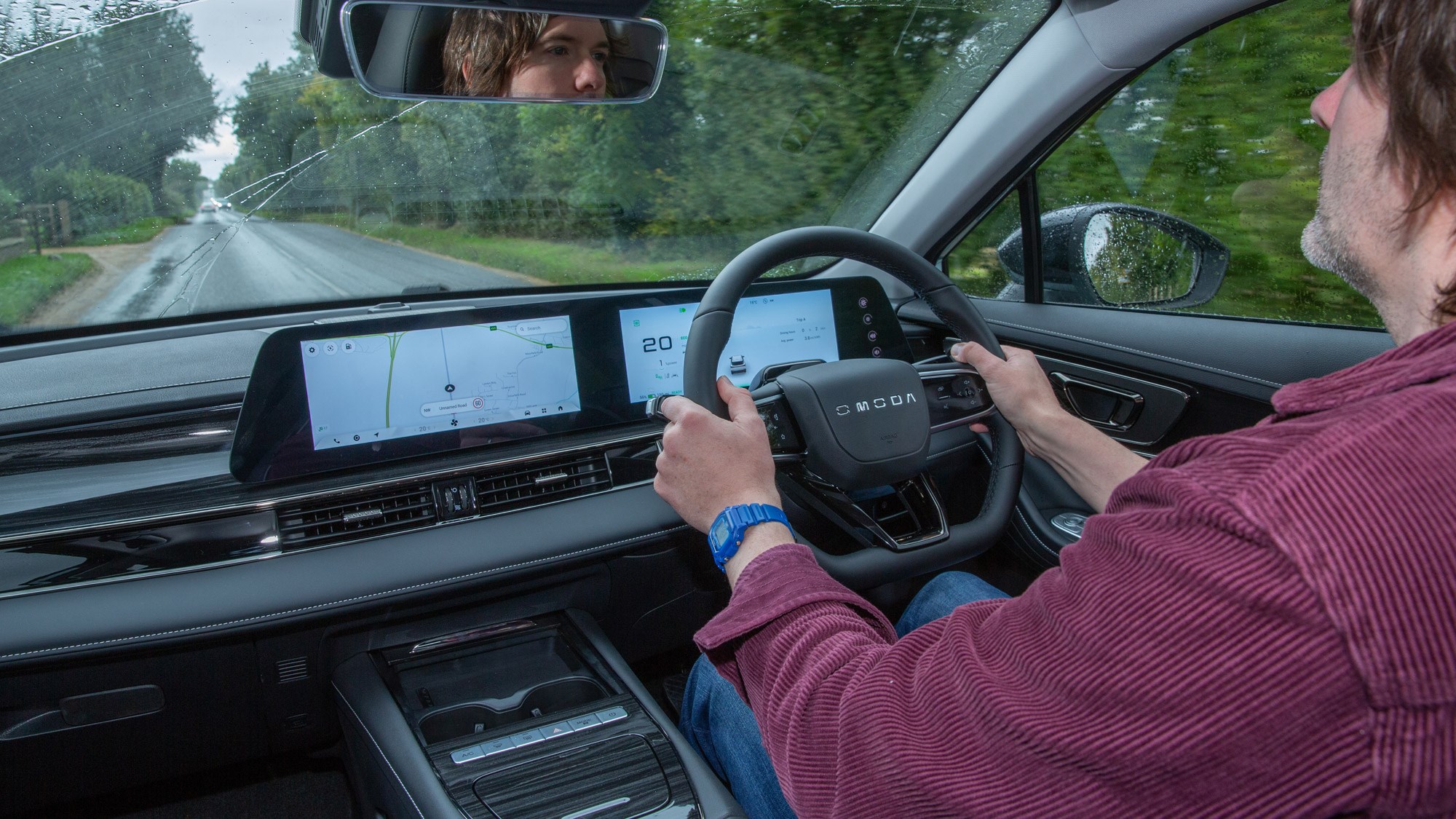
On the inside there are larger screens – twin 12.25-inch items in a curved surround replacing the petrol’s more plinth-like 10.25-inch double act – with a different skin over the operating systems. Not entirely good news, as the E5 has longer animations, talks to you more and presents the instrument cluster (if I can even call it that) in a more confusing way.
The centre console is different, too, with the gearlever changing to a column stalk and the wireless phone charger hidden under a sliding panel. There are very few buttons inside – but let’s come back to that later. The bigger changes are under the bonnet.
What are the specs?
Like many other EVs, the Omoda 5 is powered by a 150kW electric motor. However, unlike many other EVs, that 201bhp equivalent drives the front wheels, not the back ones. The e-motor produces 250lb ft of torque and is said to use a flatter, less resource-intensive winding method that also makes it quieter.
The 61kWh battery pack is a blade design, boosting crash performance, and gives the E5 an efficiency claim of around 4.1 miles per kWh (mpk) and an official WLTP driving range of 257 miles per charge. Top speed is 107mph, with 0-62mph in 7.2sec.
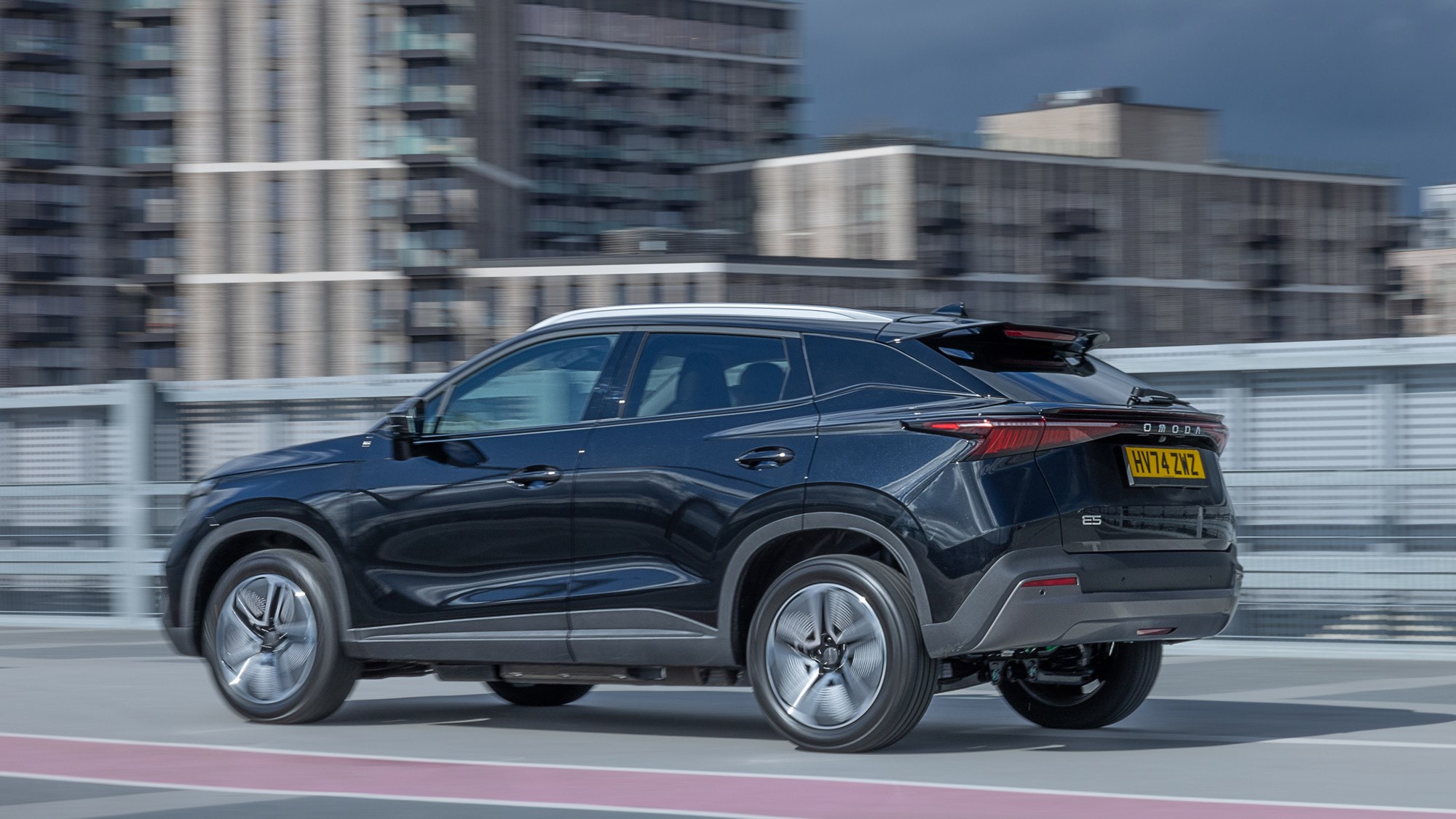
During around two hours of testing I saw between 3.3 and 3.7mpk on the trip computer, depending on how and where I was driving; extended fast dual carriageway saw it fall away sharply from its highest efficiency, which comes around town. But it didn’t seem to want to go any lower than 3.3, which isn’t too bad. We’ll be able to verify with more thorough testing later.
Range is going to be less of an issue than charging here, regardless, as the Omoda E5 is capped to a low 80kW maximum charging speed. Hence you’ll notice the firm is quoting 30-80 per cent charging times rather than the more common 10-80 (some use 20-80 now, but that’s also rather sneaky). Even so, 30-80 per cent on a DC fast charger still takes 28 minutes. On a 11kW AC wallbox it’s 3-4 hours, with a full charge in 8 – increasing to 11 hours on a more common 7kW supply.
How does it drive?
Having driven the petrol-powered Omodo 5 first – on exactly the same roads – it was something of a relief when the electric version felt immediately better from behind the wheel. It is literally and figuratively weightier, with more convincing heft to the steering, sharper brakes and the distinct sensation of a sizeable kerbweight helping to tamp-down its responses to poor surfaces. At a claimed 1710kg it’s at least a couple of hundred kilos heavier than the petrol.
The E5 feels like a more mature product. The suspension is still firm – which works to control lean in the corners but does make the ride more irritable than I’d ideally like – and you do still get tossed from side to side as the chassis deals with offset undulations. But there’s less lolloping and a greater encouragement that you can confidently press on, should the need take you.
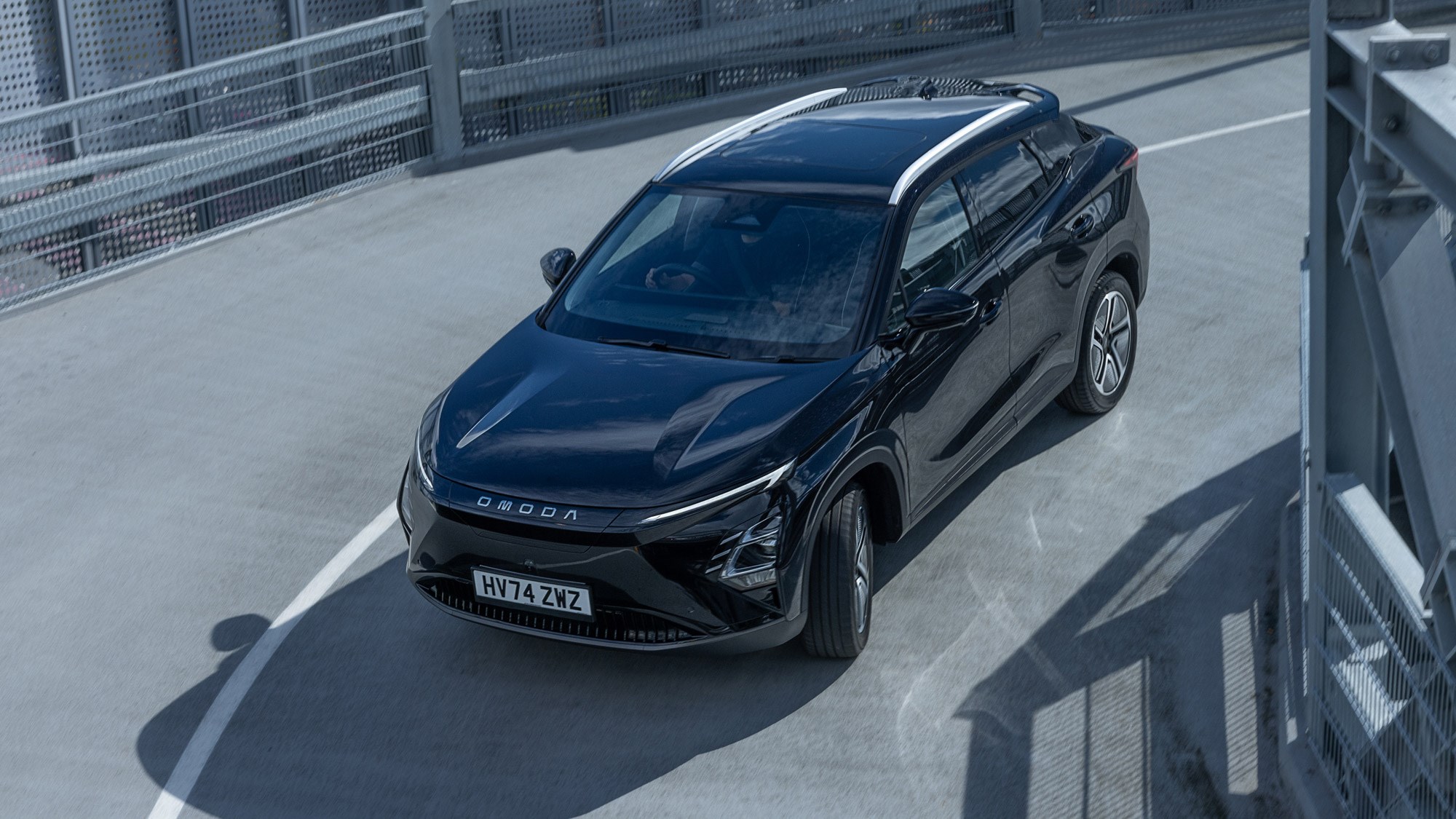
Where it falls down is in the nuances. The steering, though better than the ICE car, lacks finesse. On moderately slippery surfaces, it’s easy to generate torque-steer. And when heavy-footed over a slight crest the stability control comes in like a cartoon anvil to kill off the power.
Worst of all is the brake regeneration. There are no paddles or buttons to control this. Instead you have to go into the central infotainment system and select from a choice of three settings. The highest level delivers plenty of braking effect, but both this and the middle setting suffer from a curious calibration issue that delivers an initial surge of retardation that then drops away if I even so much as look at the accelerator pedal – which I was inevitably wont to do because that first reaction is so strong.
This results in a sort of pulsing, porpoising situation reminiscent of a learner kangarooing down the road (though by no means that extreme). I’ve driven a lot of cars with motor regen by this stage in my career, and I’ve never come across anything quite like it. Meanwhile, the lowest regen setting offers almost no braking effect, so that isn’t much fun either. A set of paddles to vary the level on the fly would be godsend under the circumstances. But no joy.
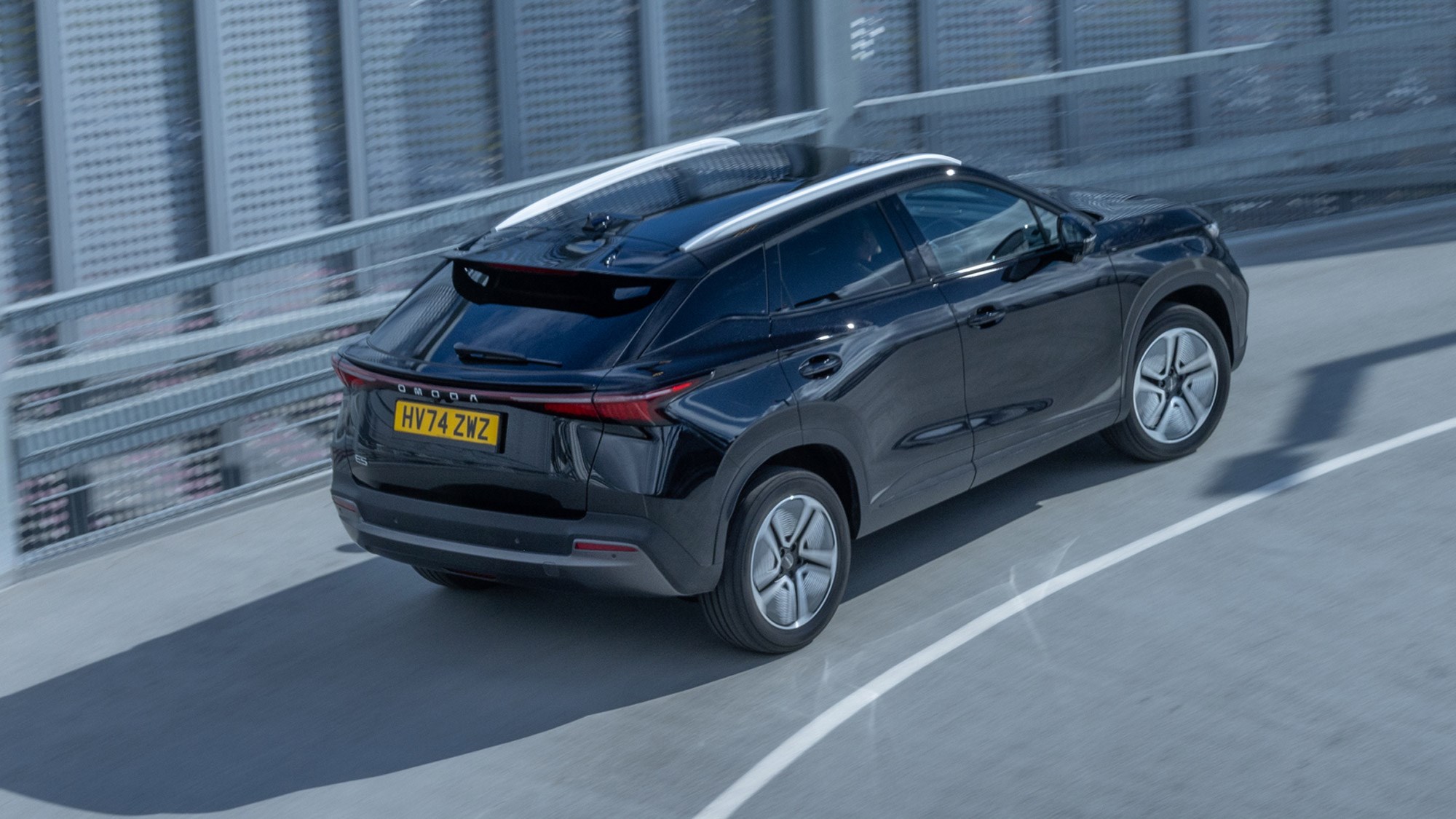
Also notable is the road noise and the shuddery structure – similar to that of the petrol model – and the sheer variation and volume of all the safety-related bonging. I think, given enough practice and a bit of room, a passable rendition of the Frog Chorus wouldn’t be out of the question.
What about the interior?
Probably makes me sound like an old duffer, but the lack of physical buttons in the cabin is proper doom and gloom here. Tried voice control via Android Auto, and that didn’t work well either.
Worse still, there’s no obvious digital back or home button in some circumstances. For instance, whenever I triggered a splash screen such as the one for the customisable star button on the steering wheel, I couldn’t then see a way to easily or quickly get back to the map. And although it is wireless Android Auto, it’s an older-style implementation that requires you to exit-out to get to any of the car’s innate functions.
The animated screens that accompany each switch of driving mode also take up too much screen time. The breathy female voice that announces what you’ve selected – as well as pointing out hazards and other potential items of interest – is another unusual touch.
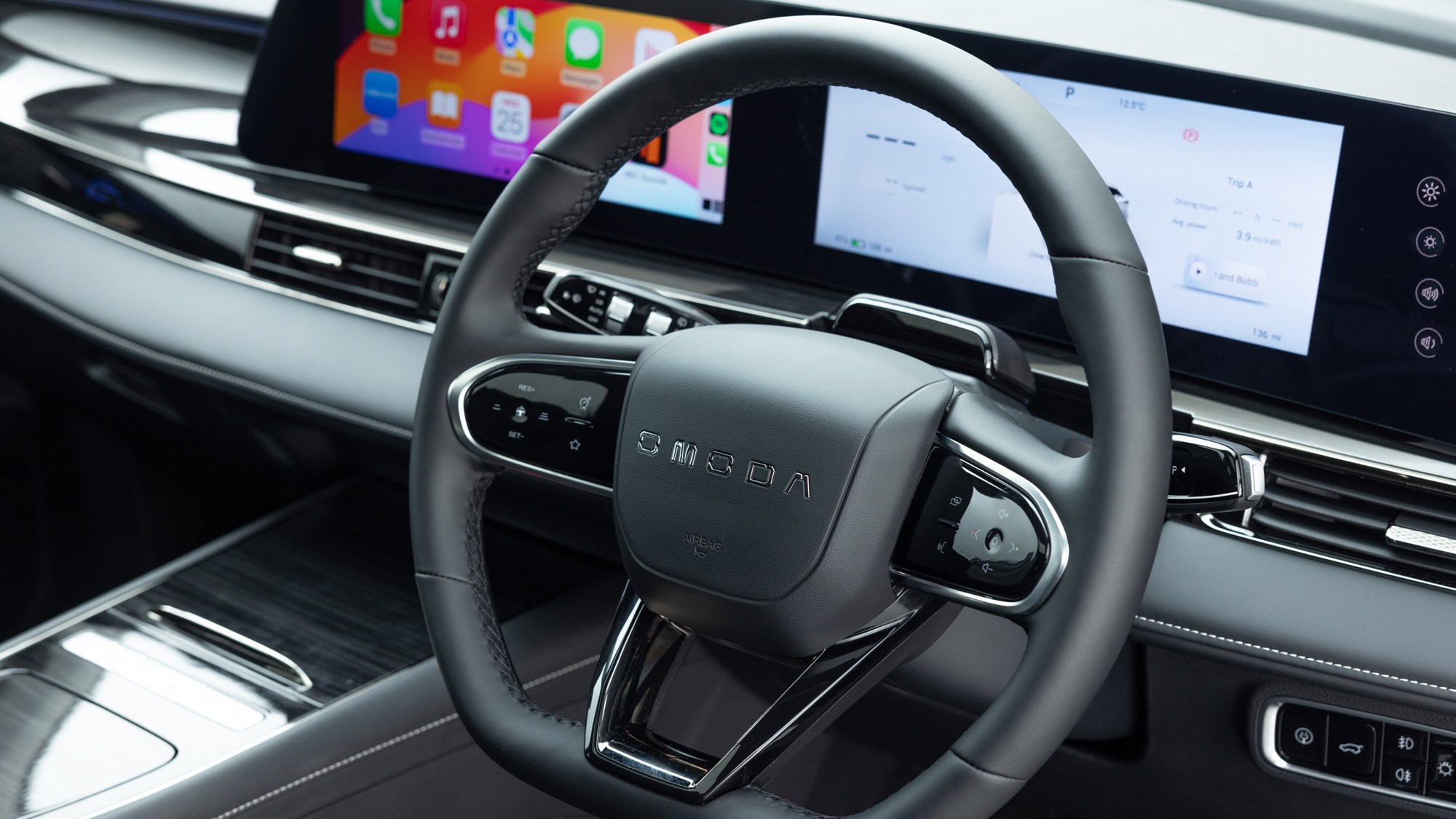
Meanwhile, the instrument panel has been designed with such a uniform and untraditional colour pallet that all of its elements merge into one. Gladly, it wasn’t too difficult to keep track of speed and remaining battery, and the graphics showing what the ADAS is seeing are both useful and impressive. So that’s less of a gripe and more of a curious observation.
As with the ICE variant, the E5 is roomy enough for people. But it has the same small 380-litre boot. With no starter button, you also have to take it on faith that the thing is going to power-down when you lock it and walk away. C’est la vie.
Before you buy (trims and rivals)
The Omoda E5 comes in two trim levels: Comfort and Noble. Despite the matching names, the standard kit doesn’t exactly mirror the equivalent petrol models. For instance, the E5 Comfort doesn’t get the electric driver’s seat adjustment and eight-speaker Sony hifi that comes as standard on the £25k combustion car. But you do get the larger screens and revised interior that are only available on electric models.
Other notable items on the E5 Comfort include LED headlights, a full complement of ADAS equipment, adaptive cruise control, blindspot monitoring, 50W wireless phone charging, front and rear parking sensors, reversing camera and keyless entry.
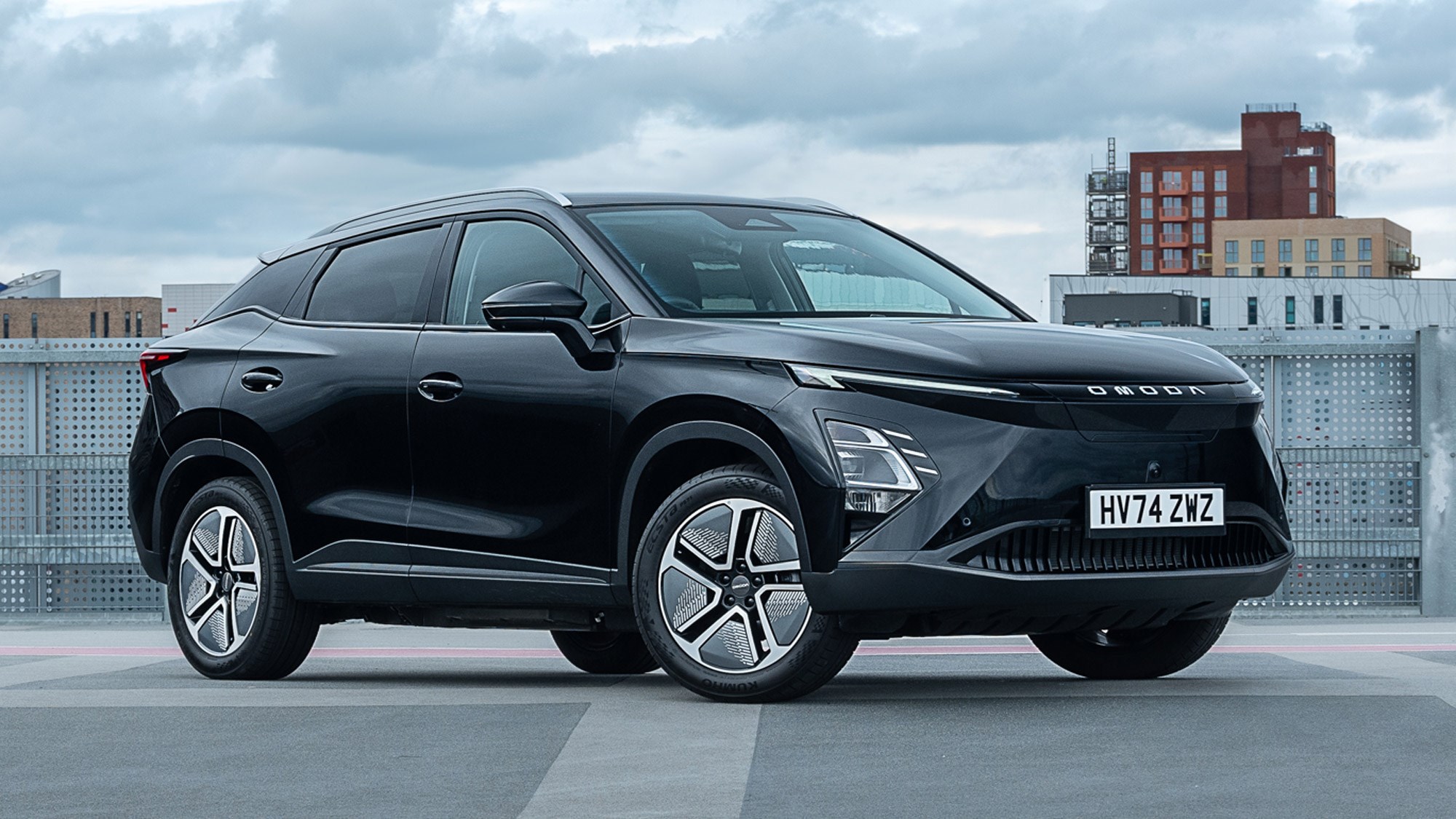
The E5 Noble adds a 360 degree surround-view camera system, Sony sound system, powered sunroof, electric front seat adjustment (both sides), powered tailgate and air purification system.
Rivals, well there are a few, depending on how sporty looking or expensive you want to be. We mentioned the Nissan Ariya and Leapmotor C10 above, but if I were shopping in the family sized electric SUV space I’d be looking at the Skoda Enyaq – the Enyaq Coupe, if you must – Ford Explorer, Hyundai Ioniq 5 or Renault Scenic E-Tech. Tough crowd. But these are significantly more expensive than the Omoda E5.
Omoda E5 verdict
The E5 makes a better case for itself than the combustion alternative. The driving experience is better, the drivetrain tech feels good value for the price, and there’s a general sense of additional polish. But if you’ve got the extra funds available, it is not really truly competitive with the alternatives offered by established brands, and there’s far more to get annoyed about than to commend.